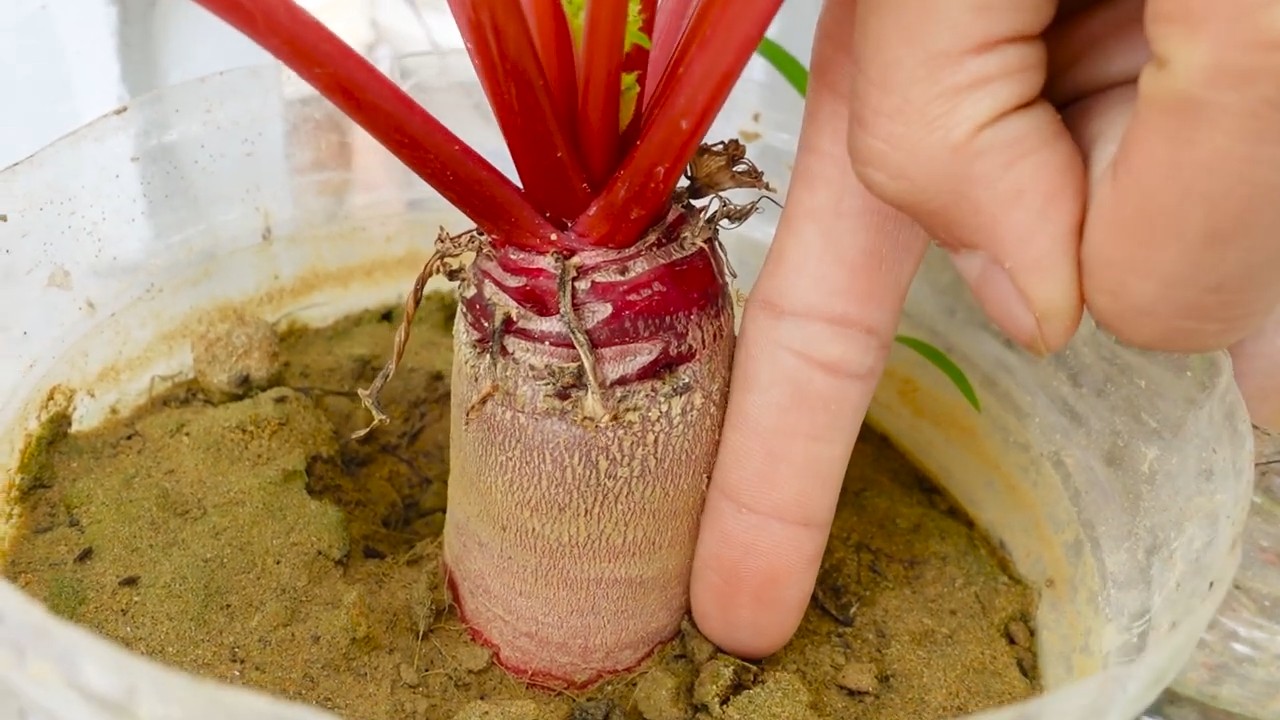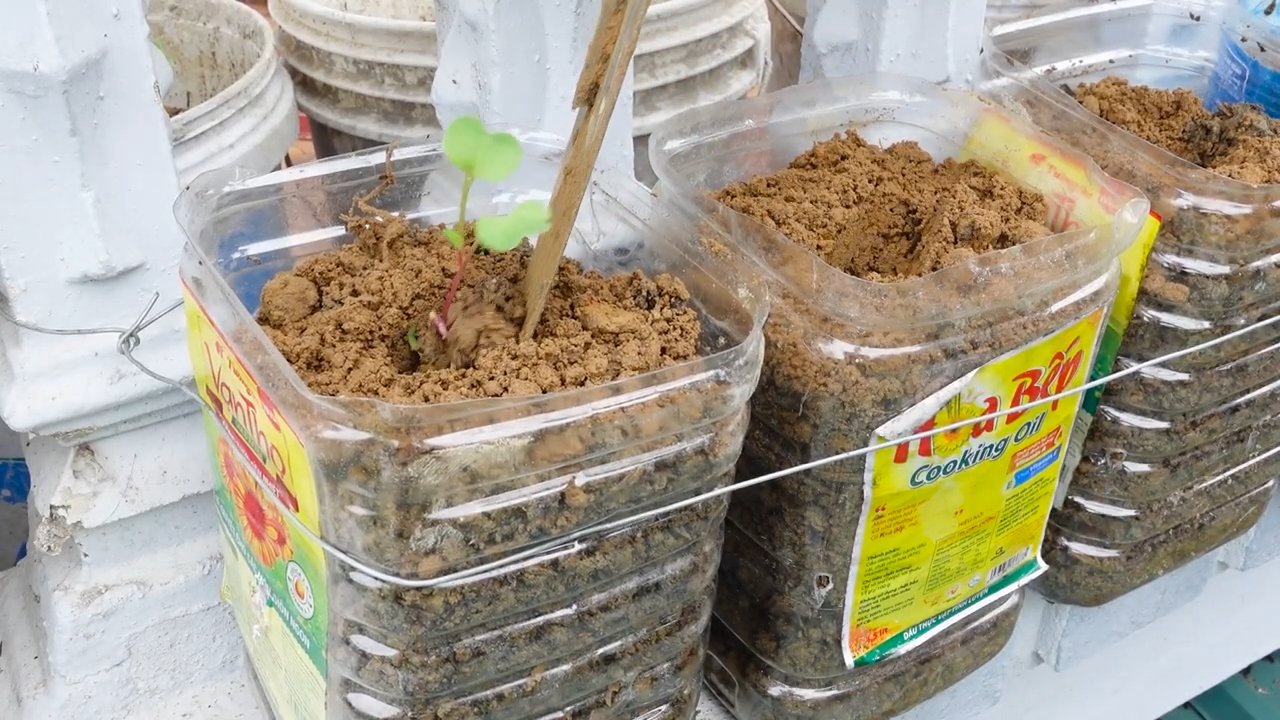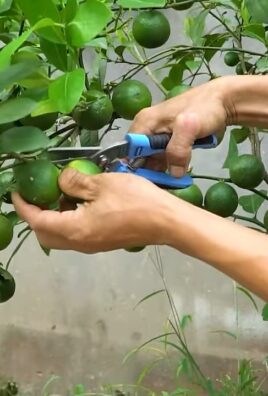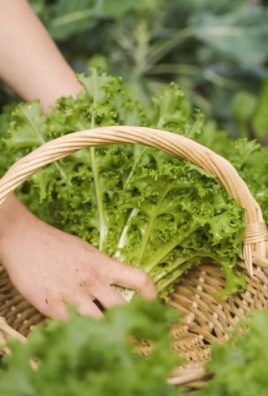Growing Beets at Home can seem daunting, but trust me, it’s easier than you think! Imagine pulling vibrant, earthy beets straight from your own backyard, ready to be roasted, pickled, or added to a refreshing salad. Forget those bland, store-bought beets – we’re talking about flavor explosions and the satisfaction of nurturing your own food.
Beets have a rich history, dating back to ancient times. The Romans were known to cultivate them, primarily for their leaves, while the roots were used medicinally. Over time, beets evolved into the sweet, colorful root vegetables we enjoy today. In some cultures, beets are even considered symbols of love and fertility – talk about a powerful veggie!
But why should you bother with the effort of growing beets at home? Well, for starters, homegrown beets taste infinitely better. Plus, you have complete control over the growing process, ensuring they’re free from harmful pesticides and chemicals. More importantly, learning how to grow beets at home is a fantastic way to connect with nature, reduce your carbon footprint, and save money on groceries. This DIY guide will provide you with simple, effective tricks and hacks to cultivate a thriving beet patch, even if you’re a complete beginner. So, grab your gardening gloves, and let’s get started!

Grow Your Own Beets: Your Guide to a Bountiful Harvest
Hello, garden friends! I love harvesting fresh vegetables straight from my garden, and beets are no exception. They are not only super healthy but also incredibly versatile in the kitchen. In this article, I’ll show you how to easily grow your own beets – from seed to harvest. Don’t worry, it’s easier than you think!
What You Need to Grow Beets
Before we get started, let’s make sure you have everything you need. Here is a list of the most important things:
- Beet seeds: Choose a variety you like! There are different colors and shapes.
- Garden tools: Spade, rake, garden shears, possibly a trowel.
- Good soil: Soil for beets or vegetables is ideal. You can also mix in compost.
- Watering can or hose: For watering.
- Mulch material (optional): Straw, wood chips, or grass clippings help retain moisture in the soil and suppress weeds.
- Plant markers: So you know what you’ve planted where.
- Fertilizer (optional): Organic fertilizer like horn shavings or compost tea can promote growth.
Preparation: The Key to Success
Good preparation is the be-all and end-all for a successful beet harvest.
1. Choosing the Right Location
Beets love the sun! Choose a spot in your garden that gets at least six hours of direct sunlight per day. Also, make sure the soil is well-drained. Beets do not like waterlogging.
2. Preparing the Soil
- Loosen the soil: Use a spade or digging fork to loosen the soil deeply. Remove stones, roots, and weeds in the process.
- Improve the soil: Mix in compost or well-rotted manure. This improves the soil structure and provides the beets with essential nutrients.
- Level the soil: Use a rake to smooth the surface. This creates a level area for sowing.
Sowing: How to Get the Seeds in the Ground
Now it gets exciting! Sowing is the first step toward your own beet harvest.
1. When to Sow
The best time to sow beets is in the spring (April/May) or summer (July/August). Pay attention to the information on the seed packet, as the optimal sowing time can vary by variety. I usually sow my beets in several batches to be able to harvest over a longer period.
2. Direct Sowing or Starting Indoors?
Beets are usually sown directly into the garden bed. Starting them in pots is possible, but not really necessary.
3. Sowing in Detail
- Make seed drills: Use a stick or the handle of a rake to create seed drills in the prepared soil. The drills should be about 2-3 cm (1 inch) deep and spaced 20-30 cm (8-12 inches) apart.
- Sow the seeds: Place the beet seeds in the drills. Make sure the seeds are not too close together. A distance of 3-5 cm (1-2 inches) between seeds is ideal.
- Cover the seeds: Cover the seeds with a thin layer of soil.
- Water them in: Gently water the seed drills with a watering can. Avoid washing the seeds away.
- Label: Label the rows with plant markers so you know what you’ve sown where.
Care: How to Keep Your Beets Thriving
After sowing, it’s important to take good care of the beets so they can grow optimally.
1. Watering
Beets need regular water, especially during germination and in dry periods. It’s best to water early in the morning or late in the evening to avoid evaporation. Make sure the soil is evenly moist, but not wet.
2. Weeding
Weeds can take nutrients and light away from the beets. Weed regularly, preferably by hand. Mulching helps to suppress weed growth.
3. Thinning
If the beet seedlings are too close together, you should thin them out. This means removing some plants to give the remaining ones more space to grow. The ideal distance between plants is about 8-10 cm (3-4 inches). By the way, you can also eat the thinned seedlings!
4. Fertilizing (optional)
If you wish, you can fertilize your beets during the growing season. It’s best to use organic fertilizer like horn shavings or compost tea. Be sure to follow the dosage instructions on the packaging.
Protecting Against Pests and Diseases
Beets can also be affected by pests and diseases. Here are some tips on how to protect your plants:
- Slugs and Snails: Snails love young beet seedlings. Protect your beets with snail barriers or sprinkle slug pellets.
- Flea Beetles: Flea beetles can eat the leaves of the beets. Protect your plants with a row cover.
- Fungal Diseases: Fungal diseases can occur in wet weather. Ensure good air circulation around the plants and avoid wetting the leaves when watering.
Harvesting: The Reward for Your Work
After about 8-10 weeks (depending on the variety), your beets are ready to harvest.
1. Knowing When to Harvest
The right time to harvest is when the beets have reached a diameter of about 5-8 cm (2-3 inches). However, you can also harvest larger beets if you prefer them that way.
2. The Harvest
Gently pull the beets out of the ground. You can also lift them with a digging fork. Remove the leaves and the root tip.
3. Storage
Beets can be stored in the refrigerator for about a week. You can also can or pickle them to make them last longer.
Beet Varieties: Diversity for Your Garden
There are many different beet varieties that vary in color, shape, and taste. Here are some popular ones:
- Red Beet: The classic variety with a deep red color.
- Golden Beet: A sweeter variety with a yellow color.
- White Beet: A mild variety with a white color.
- Chioggia Beet: A striped variety with red and white flesh.
- Sugar Beet: Mainly grown for sugar production, but can also be eaten.
Recipe Ideas: What to Do with Your Beets
Beets are incredibly versatile in the kitchen. Here are some recipe ideas:
- Beetroot Salad: Slice cooked beets and dress with vinegar, oil, salt, and pepper.
- Beetroot Soup: A warming soup with beets, potatoes, and vegetable broth.
- Beet Chips: Bake thin beet slices in the oven until they are crispy.
- Beet Juice: A healthy juice made from raw beets, apples, and carrots.
- Pickled Beets: Pickle beets in vinegar, sugar, and spices.
Additional Tips for Successful Beet Cultivation
Companion Planting: Plant beets together with other plants that mutually benefit each other.
Practice Crop Rotation: Don’t plant beets in the same spot every year. Rotate your crops to prevent diseases and pests.

Conclusion
Growing beets at home, far from being a daunting task, is a rewarding journey that culminates in a harvest of vibrant, earthy goodness. We’ve explored the simple yet effective techniques that transform a humble seed into a culinary gem. From selecting the right variety to nurturing the seedlings and finally reaping the rewards, each step is an opportunity to connect with nature and savor the fruits (or rather, roots) of your labor.
But why should you embark on this beet-growing adventure? The answer lies in the unparalleled freshness and flavor that homegrown beets offer. Store-bought beets simply cannot compare to the crisp texture and intense sweetness of those plucked straight from your own garden. Plus, you have complete control over the growing process, ensuring that your beets are free from harmful pesticides and chemicals. You can even experiment with heirloom varieties that are rarely found in supermarkets, adding a unique touch to your culinary creations.
Beyond the taste, growing beets at home is also an incredibly sustainable practice. By reducing your reliance on commercially grown produce, you’re minimizing your carbon footprint and supporting a more localized food system. And let’s not forget the sheer joy of watching your garden flourish, a therapeutic experience that can reduce stress and boost your overall well-being.
Ready to take your beet-growing skills to the next level? Consider these variations and suggestions:
* Experiment with different varieties: From the classic Detroit Dark Red to the golden-hued Golden Beet and the candy-striped Chioggia, there’s a beet variety to suit every palate and preference.
* Companion planting: Plant beets alongside other vegetables like onions, garlic, and lettuce to deter pests and improve soil health.
* Succession planting: Sow beet seeds every few weeks to ensure a continuous harvest throughout the growing season.
* Don’t forget the greens: Beet greens are just as nutritious and delicious as the roots. Sauté them with garlic and olive oil for a simple and flavorful side dish.
* Pickled Beets: Preserve your beet harvest by pickling them. This is a great way to enjoy the taste of homegrown beets year-round.
Growing beets at home is more than just a gardening project; it’s an investment in your health, your taste buds, and the environment. So, grab your gardening gloves, prepare your soil, and get ready to experience the magic of homegrown beets. We encourage you to try these tips and tricks and share your experiences with us. What varieties did you grow? What challenges did you face? What delicious dishes did you create? Your feedback will help us refine our guide and inspire other gardeners to embark on their own beet-growing adventures. Happy gardening!
Frequently Asked Questions (FAQ)
What is the best time to plant beets?
The best time to plant beets depends on your climate. In general, beets are a cool-season crop, so they thrive in temperatures between 60°F and 70°F (15°C and 21°C). For a spring crop, sow seeds 2-3 weeks before the last expected frost. For a fall crop, sow seeds 6-8 weeks before the first expected frost. In warmer climates, you can plant beets throughout the winter. Check your local weather forecast and planting calendar for specific recommendations.
How much sun do beets need?
Beets need at least 6 hours of direct sunlight per day to thrive. Choose a sunny location in your garden that receives ample sunlight throughout the day. If you live in a particularly hot climate, some afternoon shade can be beneficial to prevent the beets from bolting (going to seed prematurely).
What kind of soil is best for growing beets?
Beets prefer well-drained, loose soil that is rich in organic matter. Amend your soil with compost or well-rotted manure before planting to improve its fertility and drainage. Beets also prefer a slightly acidic to neutral soil pH (between 6.0 and 7.0). You can test your soil pH with a soil testing kit and amend it accordingly. Avoid rocky or compacted soil, as this can hinder root development.
How often should I water my beets?
Beets need consistent moisture to grow properly. Water them deeply and regularly, especially during dry periods. Aim to keep the soil consistently moist but not waterlogged. A good rule of thumb is to water when the top inch of soil feels dry to the touch. Mulching around your beet plants can help retain moisture and suppress weeds.
How do I thin beet seedlings?
Thinning beet seedlings is essential to ensure that each plant has enough space to grow. When the seedlings are about 2-3 inches tall, thin them to 3-4 inches apart. Gently pull out the excess seedlings, being careful not to disturb the roots of the remaining plants. You can transplant the thinned seedlings to another location in your garden or use them in salads.
How do I know when my beets are ready to harvest?
Beets are typically ready to harvest 50-70 days after planting, depending on the variety. The size of the beet roots will vary depending on the variety, but generally, they should be about 2-3 inches in diameter. You can also harvest the beet greens at any time, but be sure to leave enough leaves on the plant to allow the roots to continue growing. To harvest, gently loosen the soil around the beet and pull it out of the ground.
Why are my beets bolting (going to seed)?
Bolting is when a plant prematurely produces a flowering stem and seeds. Beets can bolt due to several factors, including temperature fluctuations, stress, and lack of water. To prevent bolting, choose bolt-resistant varieties, plant beets at the appropriate time of year, and provide consistent moisture. If your beets do start to bolt, you can still harvest the roots, but they may be tougher and less sweet.
What are some common pests and diseases that affect beets?
Some common pests that affect beets include aphids, flea beetles, and leaf miners. Diseases that can affect beets include leaf spot and damping-off. To prevent pests and diseases, practice good garden hygiene, such as removing weeds and debris. You can also use organic pest control methods, such as insecticidal soap or neem oil.
Can I eat beet greens?
Yes, beet greens are just as nutritious and delicious as the roots. They are a good source of vitamins A and C, as well as iron and fiber. You can eat beet greens raw in salads or sauté them with garlic and olive oil.
How do I store beets after harvesting?
To store beets after harvesting, remove the greens, leaving about an inch of stem attached. Gently brush off any excess soil, but do not wash the beets. Store them in a cool, dark, and humid place, such as a root cellar or refrigerator. Beets can be stored for several months under the right conditions.




Leave a Comment